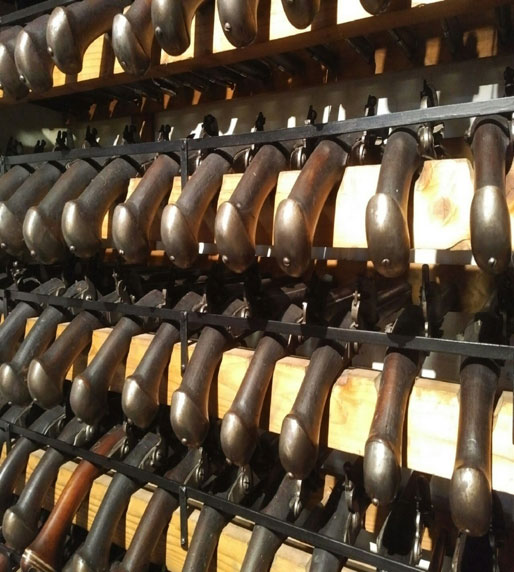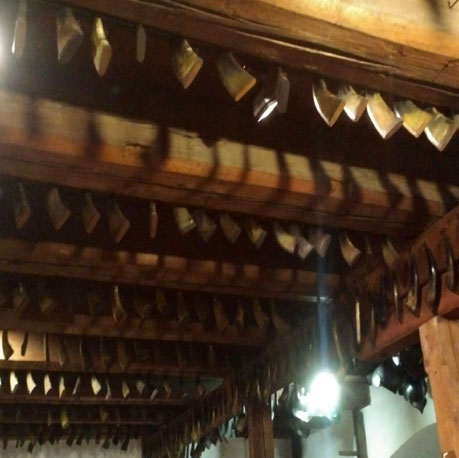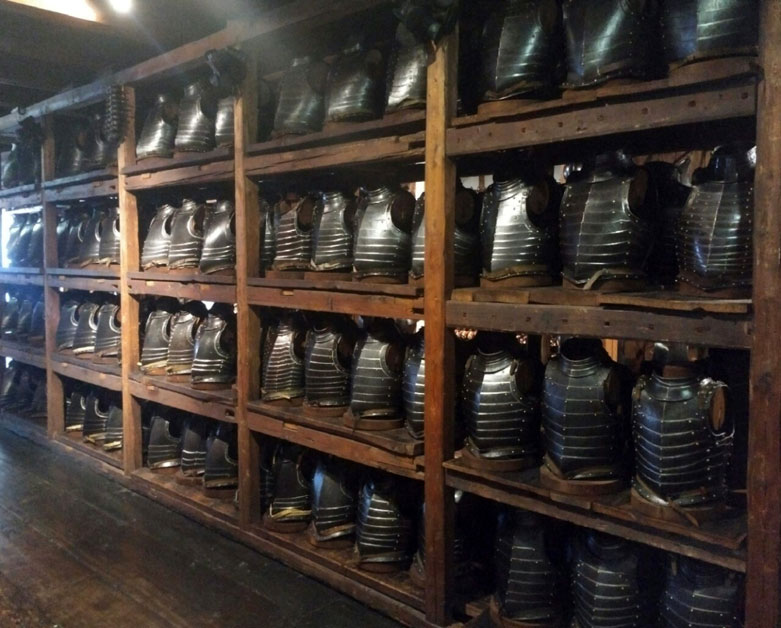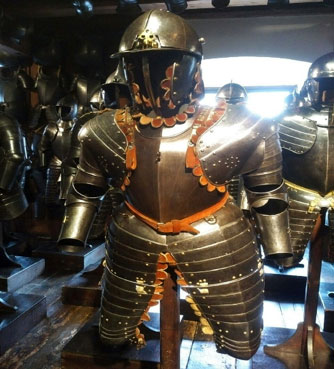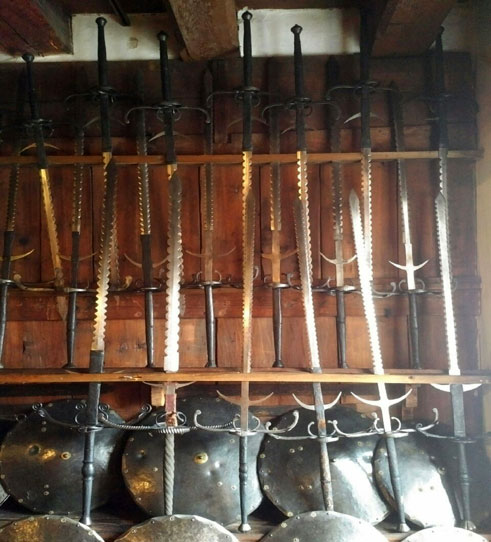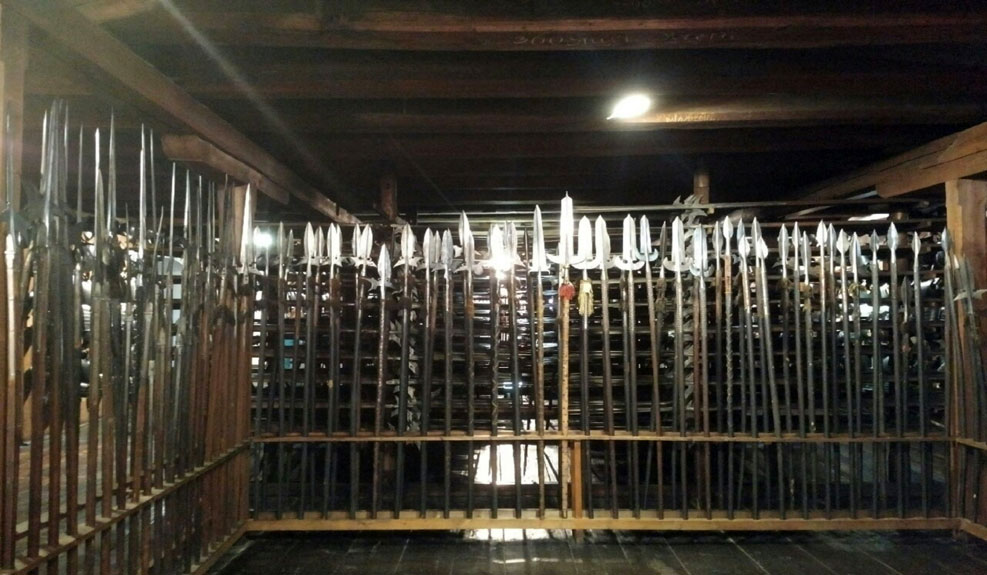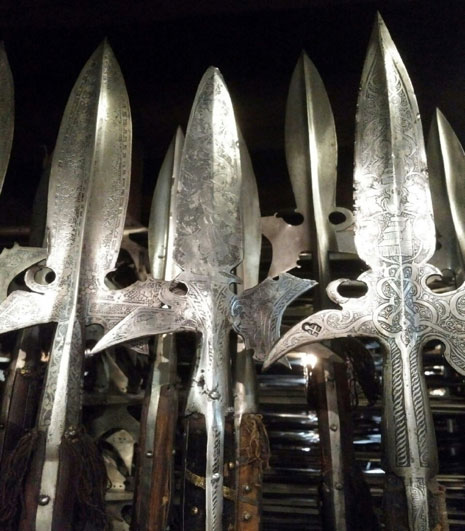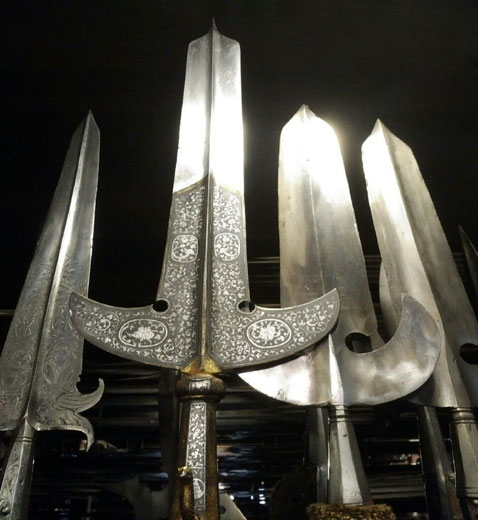Focus Article: Styrian Armoury in Graz
Introduction:
As a collector of Arms and Armour there are multiple pilgrimages that the serious collector must take to further their education in this field of study. There are many public and private collections that house examples of some of the finest and most important arms and armour in the world.
I have had the good fortune to visit many world class collections such as the Metropolitan Museum of Art, The Philadelphia Museum of Art, The Royal Armouries, The National Museum of Scotland, the Palazzo Ducale in Venice and so on. I have also had the opportunity to handle many rare and important weapons both in private and public collections, but only once have I had the honour to visit a period armoury that functioned not as a representative collection or receptacle for the most important arms in the world, but rather as a depot of arms meant to equip thousands of soldiers in their struggles against an Islamic invader determined to conquer their lands.
The presentation I am about to give, is but a small taste of the Geo-Political, Cultural and practical history of the Landeszeughaus or Styrian Armoury in Graz Austria. My presentation will barely scratch the surface of this topic and for those that are interested, I strongly recommend that they continue their research and to visit this wonderful Austrian town nestled in the foothills of the Alps. It is rich in beauty, architecture, history and food.
Geo-Political History:
Styria originated as a borderland and along with several other such lands formed a protective belt that from the 10th century onward protected the Germanic peoples and their culture against attacks from the East.
While the north of Styria is secured by the Alps, the rest of the land is comprised of Alpine foothills that drop off toward the east and offers no natural protection.
Furthermore, for a thousand years the favourable living conditions of the eastern approach to Styria, the so-called Pannonian Plain (today’s Hungary and northeastern Yugoslavia) attracted the aggressive horse cultures from the steppes of Eurasia.
Pannonian Plane:
Styria emerged in this eastern border area as a bulwark and frontline of a German Empire constantly threatened by invasion. Its duty was to prevent intruders from penetrating into the Alpine Area, thus protecting the southern flank of Vienna and the Danube River Valley, which formed the main passageway into central Europe.
Danube River Valley:
In 1180 Styria became a Duchy and in 1282 it belonged to the Habsburgs. The Habsburgs ancestral region lay in Northern Switzerland on the upper Rhine. In the second half of the 13th century under the Dynasty’s first German King, Rudolph the 1st (1273 – 1291) they shifted their residence to Vienna the chief city of the Eastern Empire. The Duchies of Austria, Styria, Carinthia and Carniola (Slovenia) became the consolidated base from which they built their future position as the most powerful dynasty in Europe.
18th Century Map of Inner Austria, Styria, Carinthia and Carniola:
It is precisely these Crown Lands that would need to be defended against the Ottoman Turks who began a push northward into the Balkans in the 14th century.
The armaments in the Styrian Armoury were accumulated primarily during the period when Styria fought to defend the Habsburgs lands from the Ottoman Threat. The Ottoman Empire was a traditional military empire of conquest, made more frightening to the Europeans because it was at the same time an Islamic State.
It took the Ottomans more than 150 years from the time they first crossed into Europe from Anatolia to finish conquering Byzantium, culminating in the fall of Constantinople in 1453, the last remnant of the Roman Empire.
With the conclusion of this war, Ottoman supremacy was established in the Eastern Mediterranean and their attention shifted to further expansion into Eastern Europe, whereby becoming a new threat to the lands that bordered the Habsburg Realm.
Anatolia and Modern Day Turkey:
The Ottoman military forces were perhaps the best in Europe. They used state of the art artillery to reduce the walls of Constantinople and their well co-ordinated forces easily crushed the medieval Balkan States.
The impact of the Ottoman campaigns on the exposed Habsburg periphery was devastating. Styria especially suffered; an attack in 1480 by a force 16,000 strong led to widespread destruction. The partially preserved ‘Plague of God’ fresco in Graz Cathedral commemorates this disaster.
Graz Cathedral:
Maximillian the 1st (1459 – 1519) was King of the Romans, also known as King of the Germans from 1486, and he was Holy Roman Emperor from 1508 until his death. He started a modern armament industry in the eastern frontier and saw to it that a sufficient supply of weapons were stored in newly constructed arsenals amongst the borderlands.
Of significance for Styria was his active interest in the production of forged iron field guns and heavy harquebuses.
Graz Armoury Cannons and Harquebuses:
He helped modernize the armourers craft in Styria by summoning the outstanding master Hans Maystetter (active 1508 – 1533) from Innsbruck to Graz. Today the armoury still owns three forged-iron light field guns, several Harquebuses and eight fluted suits of armour from those early years of Styrian defense against the Ottomans.
The most powerful Ottoman ruler Suleyman the Magnificent (reigned 1520 – 1566) led his armies on numerous campaigns into Habsburg lands in the first half of the 16th century. He captured Belgrade in 1521, Mohacs in 1526 and tried to conquer Vienna in 1529 and 1532.
Suleyman was unable to capture Vienna, but he did incorporate most of Hungary into his Empire and made Transylvania his vassal state. The Ottomans ruled these lands near Styria for more than 150 years and for Inner Austria the enemy was now their neighbour.
Maximilian’s successor, Emperor Ferdinand the 1st (named Archduke of Austria in 1521 and Emperor 1556 – 1532) was the one that felt the brunt of Suleyman the Magnificent’s onslaught. He was able to repel the Sultan before he reached Vienna in 1529 and 1532, but after each of these failed attacks Ottoman forces turned southward across eastern Styria leaving a path of devastation.
To prevent further future plundering Ferdinand secured Italian builders familiar with Renaissance style fortifications of bastions and thus Graz was fortified in 1544.
Graz and Graz Schlossberg:
During this period of vastly increased military preparedness, the Landeszeughaus in Graz assumed a well-defined role as the central arsenal of the region. By 1547, an arms keeper had been hired to maintain and manage the war materials. The earliest preserved inventory from 1557 lists 19,400 items including ammunition.
Between 1642 and 1647 the Styrian Estates had the ‘regional Armoury’ built according to the plans drawn up by Antonio Solar. As an arms depot, it was from then on the most important centre for equipment in the southeast of the Habsburg Empire.
As armed conflicts abated during the 18th century, the armoury became less important. When the Graz Armoury was closed, the estates asked for it to be preserved as a monument to regional history. The armoury first opened its doors to the general public in 1882.
Today the Landeszeughaus is one of the largest preserved historic armouries in the world. Its 32,000 objects bear witness to a period of intense conflict in a region defended against Ottoman invaders and Hungarian rebels for many centuries.
The Graz Armoury Today:
First Floor:
The first floor mainly holds firearms from the 16th, 17th and 18th centuries. Cannons, mortars, wall guns, muskets, pistols and Harquebuses, Matchlocks, Wheellocks, Powder Horns, Powder Flasks and Plug Bayonets all by the hundreds and thousands of pieces.
Wall Guns – Doppelhaken:
Muskets by the Thousands:
Matchlocks:
Pistols:
Plug Bayonets:
Powder Flasks and Horns: Second Floor:
Second Floor:
The second floor mainly holds suits of armour for heavy cavalry, harquebusiers, infantry and hussars. Wheel-locks for the heavy cavalry and harquebusiers were housed here as well.
Hussars’ Cuirass:
Hussars:
Heavy Cavalry – Cuirassiers:
Wheel-locks:
Third Floor:
Knights armours of high-quality German armourer make.
Fourth Floor:
Swords, Polearms, shields, and war-hammers.





































